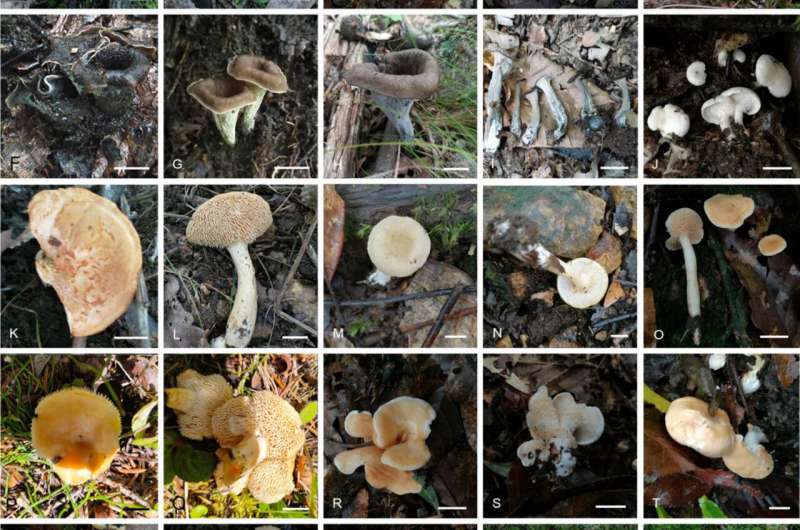Study enriches species diversity, phylogeny and evolution regularity of hydnaceae

The family Hydnaceae is a significant group of fungi in Cantharellales. some genera with lichenicolous or lichenised nutritional modes are also embedded in Hydnaceae, they all play important roles in the material cycle of terrestrial ecosystems.
In recent years, the method of molecular phylogeny has been widely used in taxonomy of fungi. However, a comprehensive phylogeny based on a multiple-marker dataset for the entire Hydnaceae is still lacking and the delimitation, morphology and ecological evolution as well as of the diversity of genera is unclear, the species diversity of this taxa in China need further research.
Dr. Yuan Haisheng and his team from the Institute of Applied Ecology (IAE) of the Chinese Academy of Sciences conducted a systematic study of the Hydnaceae, especially the umbelliform fungi, and they made a phylogenetic overview of Hydnaceae and its new taxa.
The researchers proposed the infrageneric subdivision within the genera Cantharellus, Craterellus and Hydnum based on morphological and phylogenetic analyses.
They integrated the global sequences data of Cantharellales fungi from GenBank database and first inferred five sequence fragment dataset based Maximum Likelihood and Bayesian phylogenies for the Cantharellales and reappeared the taxonomic status of Hydnaceae in the order. Seventeen genera included in Hydnaceae were confirmed according to the phylogenetic relationship.
Then, the phylogenetic status of genera Cantharellus, Craterellus, Hydnaceae and umbelliform fungi of Sistotrema in the family has been clarified. Phylogenetic relationship of taxa within Hydnaceae were further systematically sort out by fitting the morphology, ecology and phylogeny features.
In addition, the evolution of ecological (from saprotrophic, lichenised/lichenicolous to ectomycorrhizal) and morphological (from bulbil-forming/resupinate, coralloid/clavarioid to umbelliform) characteristics of Hydnaceae species was preliminarily speculated.
Furthermore, 29 fungal taxa were published, including eight new subgenera, 17 new species, two synonyms and two newly recorded species.
This study enriches the species diversity of this group in China. It has important reference value for further exploring the co-evolution of fungi in this group and tits hosts as well as the morphological and ecological evolution of fungi in other groups.
The study, titled "A phylogenetic overview of the Hydnaceae with new taxa from China," has been published in Studies in Mycology.
More information: Ting Cao et al, A phylogenetic overview of the Hydnaceae (Cantharellales, Basidiomycota) with new taxa from China, Studies in Mycology (2021). DOI: 10.1016/j.simyco.2021.100121. www.sciencedirect.com/science/ … ii/S0166061621000087
Provided by Chinese Academy of Sciences


















